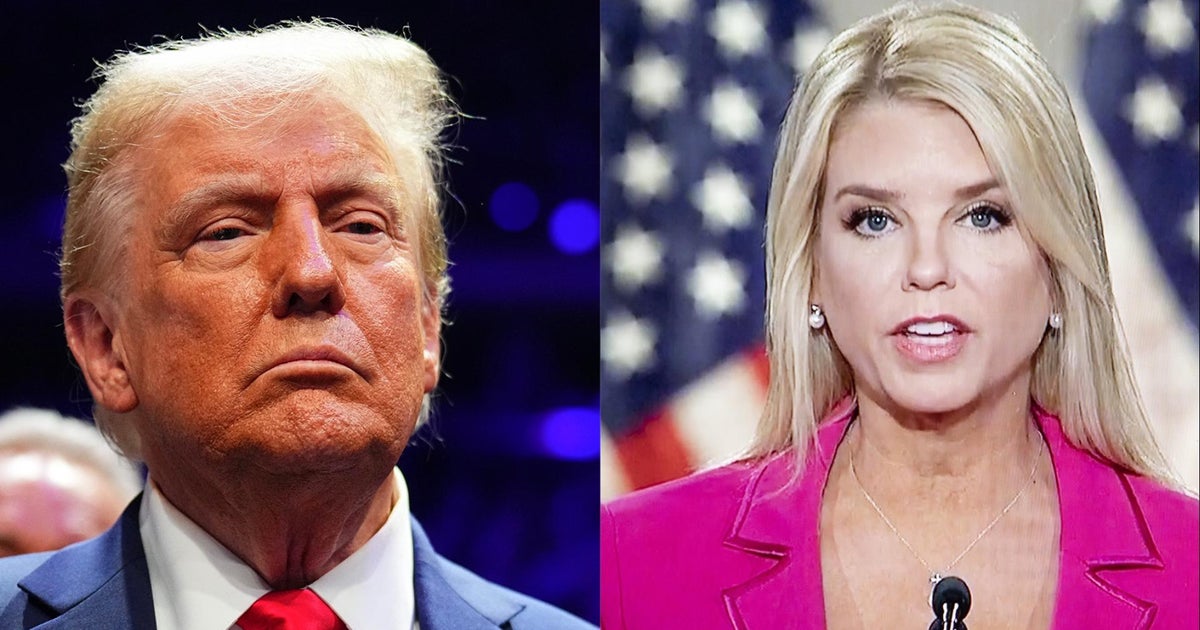Border Wall Could Leave Americans On "Mexican Side"
Follow CBSDFW.COM: Facebook | Twitter
BROWNSVILLE (AP) - The last time U.S. officials built a barrier along the border with Mexico, they left an opening at the small road leading south to Pamela Taylor's home on the banks of the Rio Grande.
Taylor hadn't been told where the fence would be built, and she doesn't know now whether officials are coming back to complete it.
"How would we get out?" asked Taylor, 88, sitting in the living room of the home she built with her husband half a century ago. "Do they realize that they're penalizing people that live along this river on the American side?"
Taylor's experience illustrates some of the effects that the border wall President Donald Trump has imagined could have on residents in the Rio Grande Valley, the sunny expanse of bilingual towns and farmland that form the southernmost point of the U.S.-Mexico border. The wall could seal some Americans on the "Mexican side" — technically on U.S. soil, but outside of a barrier built north of the river separating the two countries. Landowners could lose property, and those that already lost some for the existing fence are already preparing for a new battle.
Even if they don't win, lawyers hope to tie up the wall in court long enough that politics could effectively stop it, either in Congress or after another election.
"That's a fight that we've been ready to fight," said Efren Olivares, a lawyer with the Texas Civil Rights Project.
The U.S. government will select finalists to build pieces of wall in San Diego, then choose a company to complete the rest. Ron Vitiello, chief of the U.S. Border Patrol, told The Associated Press on Wednesday that a new barrier will eventually be built in the Rio Grande Valley, where sections of rust-colored poles 18 feet (5.5 meters) high already run through neighborhoods in Brownsville and nearby towns. Vitiello told an audience in San Antonio that the government plans to complete a wall or fence in towns that have long been under consideration.
"There will likely be (barriers) there if all of the plans come together, but I can't tell you where," he said.
Trump said he would build the wall to stop migrants entering illegally and what he described as a flow of drugs and crime. The Border Patrol makes more apprehensions along the more than 300 miles (483 kilometers) of border in the Rio Grande Valley than anywhere else.
In and around Brownsville, people have lived next to the river for generations, and residents of both sides cross bridges to work or shop daily. Taylor and others who live closest to the river routinely see border crossers walking up to their homes.
Many people living in the valley say the fence doesn't work, and there's widespread opposition there to a bigger wall. While the region is one of the Texas Democratic Party's few strongholds in a deeply conservative state, many people here resent outsiders and politicians of both parties for using the border as a talking point. The 2006 law authorizing a fence passed with support from many Democrats, including then-Sen. Hillary Clinton, who lost to Trump in November.
When the U.S. government built the fence, it had to take hundreds of landowners to court to use its power of eminent domain. That's because unlike in other southern border states, most Texas border land is privately owned, and tough terrain and water use agreements with Mexico meant some fence was built a mile or more north of the river.
With court fights also expected over Trump's wall, the Texas Civil Rights Project has begun signing up landowners and identifying people who might be affected.
Under the U.S. Constitution, the government must prove it wants to seize land for public use and must offer a landowner "just compensation." While challenging the wall's "public use" would be difficult, those who believe they're not getting the full value of their land could take the case to court, setting up trials that could take years.
Antonio Reyes said he's seen people scale the border fence that bisects his backyard and jump down in seconds. Sometimes they carry bales of what appear to be drugs.
A higher wall is "still not going to stop them," he said. "They'll shotput it or whatever they have to do."
In Roma, a town of 10,000 people, a visitor standing on the bluffs overlooking the Rio Grande can see traffic moving across a tiny bridge and hear chickens clucking on the Mexican side. The Border Patrol occasionally uses blimps to monitor traffic, with agents stationed nearby.
Juan Moreno, a 64-year-old retiree, recalls surveyors measuring his neighborhood several years ago for a fence, although it was never built in Roma.
He credits Border Patrol agents for monitoring the border and providing much-needed business for stores in Roma. But he chuckled when asked about the wall.
"I don't know if I'm going to be in the U.S. or Mexico," he said. "It's up to Trump."
In San Benito, Eloisa Tamez spent seven years trying to stop the government from running the fence through her property, which had been in her family since the 1700s. The government eventually won, but only after agreeing to pay about $56,000, many times what it initially offered. She uses a gate to access the part of her property that's on the other side of the fence.
Now, she's preparing for the possibility of another court battle.
"I probably have one more decade to live, and I had one decade of torture," said Tamez, 82. "I think if they start that business again, I don't know how much fight I'll have left in me, but I'm going to fight it until the end."
(© Copyright 2017 The Associated Press. All Rights Reserved. This material may not be published, broadcast, rewritten or redistributed.)



